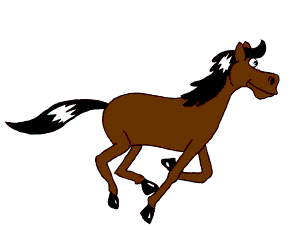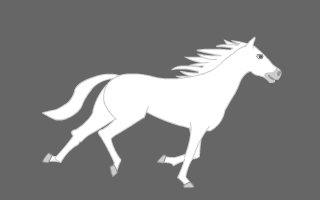Rotoscoping
From Wikipedia, the free encyclopedia

Rotoscoping is an animation technique in which animators trace over live-action film movement, frame by frame, for use in animated films[1]. Originally, pre-recorded live-action film images were projected onto a frosted glass panel and re-drawn by an animator. This projection equipment is called a rotoscope, although this device has been replaced by computers in recent years. In the visual effects industry, the term rotoscoping refers to the technique of manually creating a matte for an element on a live-action plate so it may be composited over another background.
Contents |
[edit] History
The technique was invented by Max Fleischer, who used it in his series Out of the Inkwell starting around 1915, with his brother Dave Fleischer dressed in a clown outfit as the live-film reference for the character Koko the Clown. Max patented the method in 1917.[2]
Fleischer used rotoscope in a number of his later cartoons as well, most notably the Cab Calloway dance routines in three Betty Boop cartoons from the early 1930s, and the animation of Gulliver in Gulliver's Travels (1939). The Fleischer studio's most effective use of rotoscoping was in their series of action-oriented Superman cartoons, in which Superman and the other animated figures displayed very realistic movement. The Leon Schlesinger animation unit at Warner Brothers, producing cartoons geared more towards exaggerated comedy, used rotoscoping only occasionally.
Walt Disney and his animators employed it carefully and very effectively in Snow White and the Seven Dwarfs in 1937[3] Rotoscoping was also used in many of Disney's subsequent animated feature films with human characters, such as Cinderella in 1950. Later, when Disney animation became more stylized (e.g. One Hundred and One Dalmatians, 1961), the rotoscope was used mainly for studying human and animal motion, rather than actual tracing.
Rotoscoping was used extensively in China's first animated feature film, Princess Iron Fan (1941), which was released under very difficult conditions during the Second Sino-Japanese War and World War II.
It was used extensively in the Soviet Union, where it was known as "Éclair" (on russian — эклер), from the late 1930s to the 1950s; its historical use was enforced as a realization of Socialist Realism[dubious ]. Most of the films produced with it were adaptations of folk tales or poems - for example, The Night Before Christmas or The Tale of the Fisherman and the Fish. Only in the early 1960s, after the Khrushchev Thaw, did animators start to explore very different aesthetics.
Ralph Bakshi used the technique quite extensively in his animated movies Wizards (1977), The Lord of the Rings (1978), American Pop (1981), and Fire and Ice (1983). Bakshi first turned to rotoscoping because he was refused by 20th Century Fox for a $50,000 budget increase to finish Wizards, and thus had to resort to the rotoscope technique to finish the battle sequences. (This was the same meeting at which George Lucas was also denied a $3 million budget increase to finish Star Wars.)[4][5]
Rotoscoping was also used in Heavy Metal (1981), the a-ha music video "Take on Me" (1985), and Don Bluth's Titan A.E. (2000).
While rotoscoping is generally known to bring a sense of realism to larger budget animated films, the American animation company Filmation, known for its budget-cutting limited TV animation, was also notable for its heavy usage of rotoscope to good effect in series such as Flash Gordon, Blackstar, and He-Man and the Masters of the Universe.
Smoking Car Productions invented a digital rotoscoping process in 1994 for the creation of its critically-acclaimed adventure video game, The Last Express. The process was awarded U.S. Patent 6,061,462, Digital Cartoon and Animation Process. In the mid-1990s, Bob Sabiston, an animator and computer scientist veteran of the MIT Media Lab, developed a computer-assisted "interpolated rotoscoping" process which the director Richard Linklater later employed in the full-length feature films Waking Life (2001) and A Scanner Darkly (2006).[6] Linklater licensed the same proprietary rotoscoping process for the look of both films. Linklater is the first director to use digital rotoscoping to create an entire feature film.
Additionally, a 2005-08 advertising campaign by Charles Schwab uses rotoscoping for a series of television spots, under the tagline "Talk to Chuck." This distinctive look is also the work of Bob Sabiston.
[edit] Technique


Rotoscope output can have slight deviations from the true line that differ from frame to frame, which when animated cause the animated line to shake unnaturally, or "boil". Avoiding boiling requires considerable skill in the person performing the tracing, though causing the "boil" intentionally is a stylistic technique sometimes used to emphasize the surreal quality of rotoscoping, as in the music video Take on Me.
Rotoscoping (often abbreviated as "roto") has often been used as a tool for visual effects in live-action movies. By tracing an object, a silhouette (called a matte) is created that can be used to extract that object from a scene for use on a different background. While blue and green screen techniques have made the process of layering subjects in scenes easier, rotoscoping still plays a large role in the production of visual effects imagery. Rotoscoping in the digital domain is often aided by motion tracking and onion-skinning software. Rotoscoping is often used in the preparation of garbage mattes for other matte-pulling processes.
Rotoscoping has also been used to allow a special visual effect (such as a glow, for example) to be guided by the matte or rotoscoped line. One classic use of traditional rotoscoping was in the original three Star Wars films, where it was used to create the glowing lightsaber effect, by creating a matte based on sticks held by the actors. To achieve this, editors traced a line over each frame with the prop, then enlarged each line and digitally added the glow.
[edit] Examples
[edit] Animated films
- Heavy Metal (film)
- Snow White and the Seven Dwarfs
- The 1940s Superman cartoons
- Saturday Evening Puss (1950)
- The Lord of the Rings (1978 film)
- Fire and Ice (1983 film)
- My Neighbors the Yamadas (baseball game television footage; scene where Takashi Yamada confronts hooligans)
- Year of the Fish
- Peter Pan (1953) (Bobby Driscoll as Peter Pan, where his performance was filmed, and then rotoscoped for the animated character) [7]
- Taekwon V
- Yellow Submarine (most notably during the Lucy in the Sky with Diamonds sequence; other scenes)
- Waking Life (2001)
- A Scanner Darkly (2006)
[edit] Live action films
- Star Wars (Episodes IV, V, & VI) (lightsaber effects)
- Tron (1982)
- Who Framed Roger Rabbit (1988)
- Forrest Gump (1994) (Rotoscoping was used to integrate the title character into footage of famous events)
- Harry Potter and the Order of the Phoenix (2007)
[edit] Video games
- Prince of Persia (Among the first application in video gaming)
- Another World
- Commander Blood
- Flashback: The Quest for Identity
- The Last Express
- Hotel Dusk: Room 215
- Lester the Unlikely
[edit] Music videos
- "Take on Me" and "Train of Thought" by A-Ha
- "Money for Nothing" by Dire Straits
- "Money for Nothing/Beverly Hillbillies*" by "Weird Al" Yankovic
- "Save Me" by Hanson
- "Breaking the Habit" by Linkin Park
- "Shadrach" by Beastie Boys
- "Get in Line" by Barenaked Ladies
- "Frijolero" by Molotov
- "Rip It Up" by Jet
- "The Kids Aren't Alright" by The Offspring
- "Drive" by Incubus
- "Shoot The Runner" by Kasabian
- "Forsaken" by Dream Theater
- "Calling All Girls" by Hilly Michaels
- "This Time" by Wonder Girls
- "Heartless" by Kanye West
- "Destiny" by Zero 7
- "Heavenly Star" by Genki Rockets
- "Mamma's Boy" by Chromeo
- "Super Colossal" by Joe Satriani
[edit] Television shows
- Delta State
- The New Adventures of Flash Gordon (Filmation 1979-1980)
[edit] Short Films
- Colour Blind (2009 film) (Rotoscoping used to produce the lead characters skin colour changes)
[edit] Miscellanea
- Skwisgaar Skwigelf lesson on the Dethklok season 1 DVD.
[edit] See also
- Rotoshop is also referred to as interpolated rotoscoping
- Motion capture
[edit] References
- ^ "Through a 'Scanner' dazzlingly: Sci-fi brought to graphic life" USA TODAY, August 2, 2006 Wednesday, LIFE; Pg. 4D WebLink
- ^ US1,242,674 (1917-10-09) Max Fleischer, Method of producing moving-picture cartoons.
- ^ "Reviving an ancient art" The Times (London), August 5, 2006, FEATURES; The Knowledge; Pg. 10. Weblink, see bottom of page
- ^ Ralph Bakshi: The Wizard of Animation making-of documentary.
- ^ Bakshi, Ralph. Wizards DVD, 20th Century Fox Home Entertainment, 2004, audio commentary. ASIN: B0001NBMIK
- ^ La Franco, Robert (March 2006). "Trouble in Toontown". Wired 14 (03). ISSN 1059-1028. http://www.wired.com/wired/archive/14.03/scanner.html. Retrieved on 2008-10-15.
- ^ http://www.imdb.com/name/nm0237985/bio
[edit] External links
|
||||||||||||||||||||||||||||||||||||

